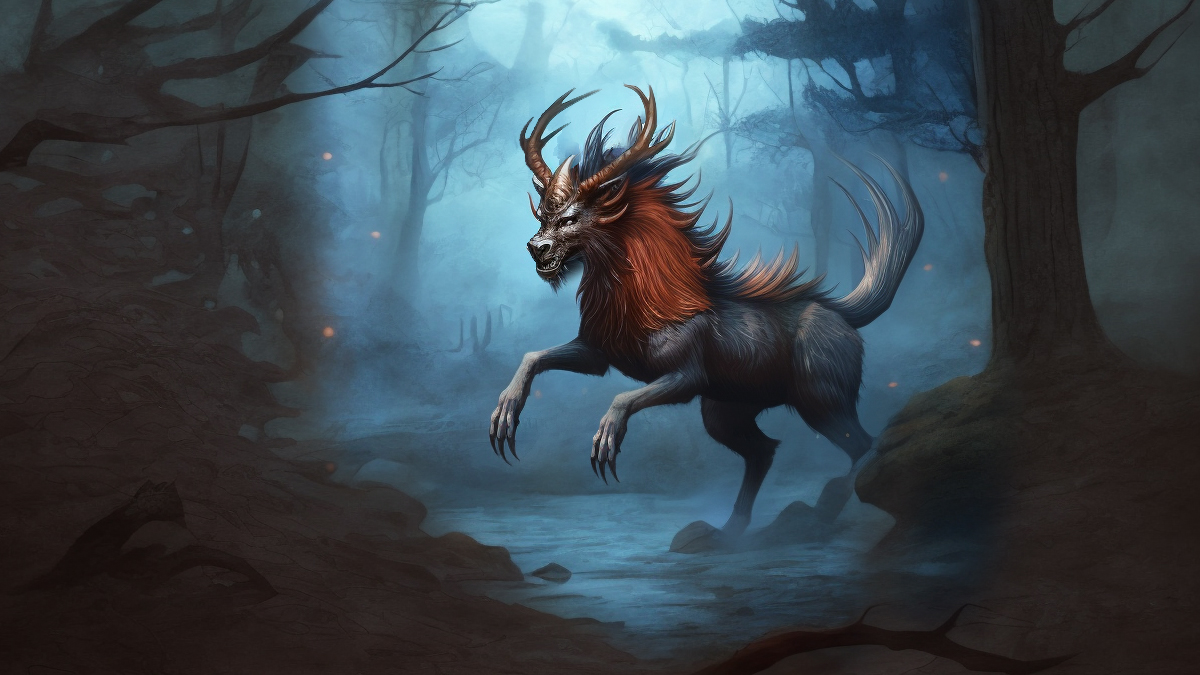The Qilin is a popular mythical creature originating from China. In English-speaking countries, it is known as the Chinese Unicorn. It is thought to be the living incarnation of fire, water, earth, wood, and metal.
There have also been reported sightings in recent times, which are the subject of much debate.
Description
“Qilin” translates into English as “unicorn,” although the Qilin tends to be depicted with two horns.
One of the “four benevolent animals” of ancient China (the others being the Chinese dragon, the tortoise, and the phoenix), the Qilin, is, in mythology, a steed used by gods.
It often appears alongside gods, and although it is a heavenly creature, it does not have wings to fly.
According to legend, a Qilin likes to perform good deeds and help good people. It will protect and bless anyone who hosts its statue and can aid the host’s career. A Qilin can also fend off danger and demons and can bring prosperity.
A Qilin can also go after evildoers, which is why those in businesses such as prostitution, gambling, and drug dealing do not possess a Qilin statue at work or in their homes.
Said to be able to see into the hearts of men, Qilins are also purported to be able to run at the speed of light and live up to 1000 years.
These benevolent beasts are also known to bring prophecies. Shortly before Confucius was born, a Qilin appeared at his home and delivered a scroll. The scroll proclaimed that Confucius would have the virtue of emperors.
Years later, the death of Confucius was subsequently foreshadowed when a Qilin was injured by a charioteer.
The creatures are thought to appear when a sage is either dying or being born and in areas ruled by a benevolent and enlightened leader.
They are represented on many ancient structures, usually in the form of a carving or relief. Nowadays, they are still featured on furniture, in art, and on clothing.
The creature, much like a unicorn, has a single horn on its forehead and has the body of a deer and the tail of an ox.
The Qilin is a hooved, chimerical creature that has scaly skin, the body of a horse, and the head of a dragon. It also has some deer-like features. It often has a yellow belly.
Qilins are commonly depicted in gold but have been presented in a variety of colors. Strikingly, they are often shown as having what looks like fire all around their body.
In addition, they have some notable dragon-like features, such as thick eyelashes, a mane, and a beard.
The Qilin is a vegetarian as a result of its divinity and peaceful nature – but this peaceful nature can be challenged if a pure person is being threatened or is in danger of being hurt by an evildoer.
The way in which the Qilin has been presented has changed over time. During the Ming Dynasty, it actually became a sort of stylized version of the giraffe.
This came about because Zheng He traveled over to West Africa, returning to Nanjing with two giraffes which became known as “qilin.” He announced that the giraffes were magical creatures, and their capture indicated the greatness of his power.
It is believed that the Qilin’s ability to walk over grass without disturbing it may be related to the giraffe’s long, thin legs and that the giraffe’s tessellated coat pattern could have inspired the Qilin’s scaly skin.
One theory suggests that the Qilin is related to a rare endangered creature called a saola. The saola has two horns, but it’s thought the animal’s rarity may have caused it to become the root of the mythical qilin.
Sometimes referred to as the “Asian unicorn,” a saola was captured in Laos in 1999. At the time, CNN reported that villagers had captured the animal. Unfortunately, the animal passed away before a team of conservation experts could get to it, but they were able to confirm that the remains belonged to a saola.
Sightings and Tales
A video was taken in December 2016 in the Ebinur Lake National Nature Reserve in China’s remote Uyghur Autonomous Region near the border with Afghanistan.
The video was shot from a camera set up by wildlife researchers, and it shows an animal that looks like a cross between a horse and a deer.
Sightings of similar animals had been made in the region, but no reports had been filed for 10 years before this video surfaced.
Reports of Qilin sightings are extremely rare, and no one has been able to confirm the reports. A very early documented sighting was apparently made in 2697 BC by a Chinese emperor called Huang-ti, who said a Qilin walked right through his palace.
The earliest sighting, however, was even earlier than that. In 2800 BC, if the legend is to be believed, Emperor Fu Xi saw a Qilin rise up from the Huang-He River.
| Other Name/s | Chinese Unicorn, Kilin |
| Location | China, Japan, North Korea, South Korea, Vietnam, |
| Type | Hybrid |
| Habitat | Human Society |
References
theworldofchinese.com, “The Legendary Qilin”, accessed September 12 2017,
tattoonicorn.tumblr.com, “Untitled”, accessed September 12 2017,
mysteriousuniverse.org, ““Mythical” Chinese Creature Spotted On Camera”, accessed September 12 2017,
unknownexplorers.com, “Ki-Lin”, accessed September 12 2017,
everything2.com, “qilin”, accessed September 12 2017,
https://www.britannica.com/topic/long, “qilin,” accessed February 16, 2023.
